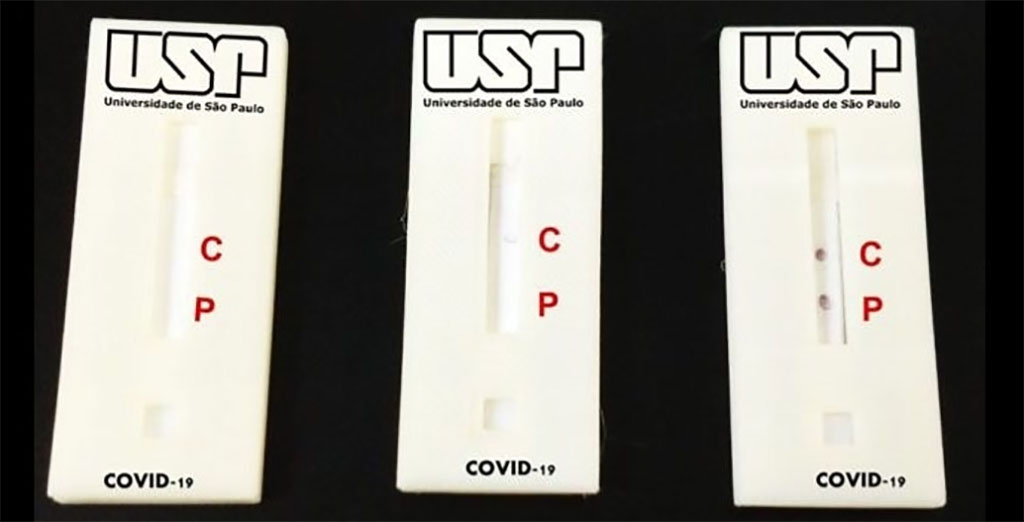10-Minute COVID-19 Diagnostic Test Based on Nanoparticles Identifies IgG Antibodies and Costs Only Fifth of Market Average
By LabMedica International staff writers
Posted on 04 Feb 2021
A new COVID-19 test uses technology based on nanoparticles to detect antibodies to the novel coronavirus in 10 minutes and costs only a fifth of the market average.Posted on 04 Feb 2021
The test developed by researchers at the University of São Paulo’s São Carlos Chemistry Institute (IQSC-USP; São Paulo, Brazil) and Biolinker (São Paulo, Brazil) works similarly to the rapid tests available now in pharmacies. It analyzes a drop of blood, and two red LEDs light up if it detects the presence of immunoglobulin G (IgG) antibodies, which are produced in the acute phase of COVID-19 (10 days after the onset of symptoms on average). According to the researchers, the technology can easily be adapted to the novel SARS-CoV-2 variants, if necessary.

Image: 10-Minute COVID-19 Diagnostic Test Based on Nanoparticles Identifies IgG Antibodies and Costs Only Fifth of Market Average (Photo courtesy of Karla Castro/USP)
The test can be sold for less than USD 6 after it receives regulatory approval thanks to efforts by the researchers to optimize the quantity of raw materials and reagents in order to lower its production cost and develop a technology based on nanoparticles to facilitate IgG detection. The researchers combined a gold nanoparticle (which originates the red color) with a piece of the virus’s spike protein recognized by human antibodies. To develop the molecule used in the test device, the researchers worked in the laboratory to synthesize the docking tip of the spike protein, known as the receptor-binding domain (RBD), and used a recombinant DNA technology involving bacteria genetically modified to express the viral protein in vitro.
“The more antibodies there are in the blood, the brighter the red color. We believe this means the test can also be used to monitor the response to vaccination,” said Frank Crespilho, a professor at IQSC-USP and principal investigator for the study.
Related Links:
University of São Paulo
Biolinker













